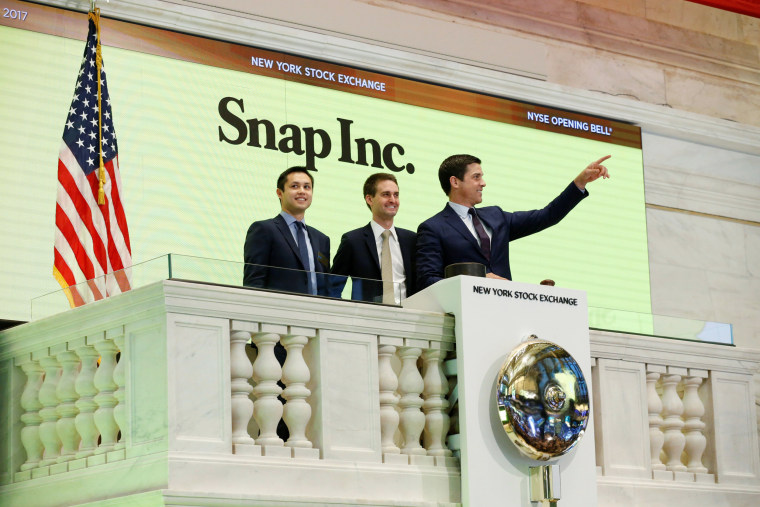Snap, crackle, pop! Within an hour of Snap's first public trading Thursday morning, the company's shares had already soared by 50 percent as investors jockeyed for a piece of the year's hottest IPO.
But what exactly is an IPO? And how will it change Snap's fortunes?
An initial public offering is the first time a company’s stock goes on sale. It’s a way for start-ups or smaller companies to secure huge amounts of capital. In the case of Snap, the messaging and camera company stands to gain at least $3.4 billion in cash by listing 200 million shares at $17 each.
The first step for an IPO is to secure a bank or banks who will act as underwriter and put together a financial report on the company. That final report, or prospectus, is then filed with the Securities and Exchange Commission, and a date and location are set for the IPO.
For its March 2 IPO, Snap filed a full month earlier, on February 2.
The company chose to be listed on the New York Stock Exchange — eschewing the tech-heavy Nasdaq, where Facebook scored its record-setting IPO.
Related: Who Are the Big Winners in Alibaba's IPO?
Landing the biggest tech IPO of the year was a considerable win for the NYSE — its president, Tom Farley, told CNBC Thursday morning that he had spent time with Snap CEO Evan Spiegel’s mother and other family members, indicating quite how personally involved Farley was in ensuring a smooth deal.
For an IPO launch — the first day that shares are available for public trading — investors buy up a certain amount of stock as soon as it is made available. Later that day, stocks are available for the general public to purchase. Whether or not those shares cost substantially more or less than at the beginning of the day is an indication as to whether or not the shares were overpriced — though underwriters can also underprice in order to secure first-day fireworks.
Related: President Trump Joins Snapchat
Snap chose the perfect moment for its IPO: Wall Street is clamoring to capitalize on a record run of stock highs in a market that has remained buoyant on pro-business sentiment from the administration of President Donald Trump.
"The environment is terrific. Animal spirits are running through the streets here. What better time to price,” Stephen Massocca of Wedbush Securities told Reuters.
But IPO investing is not for the faint of heart: For the most part, it’s a game of snakes and ladders for at least six months. However, forward-thinking investors who bought into Google at the get-go and bided their time before cashing in have seen returns of around 1,800 percent.
Snap's Spiegel and Chief Technology Officer Bobby Murphy stand to make around $384 million apiece from the 16 million shares they each sold. But that's the tip of the iceberg for these twenty-something co-founders. They still own more than 97 million shares of a company whose market valuation currently stands at $30 billion, making them Wall Street's newest overnight billionaires.

